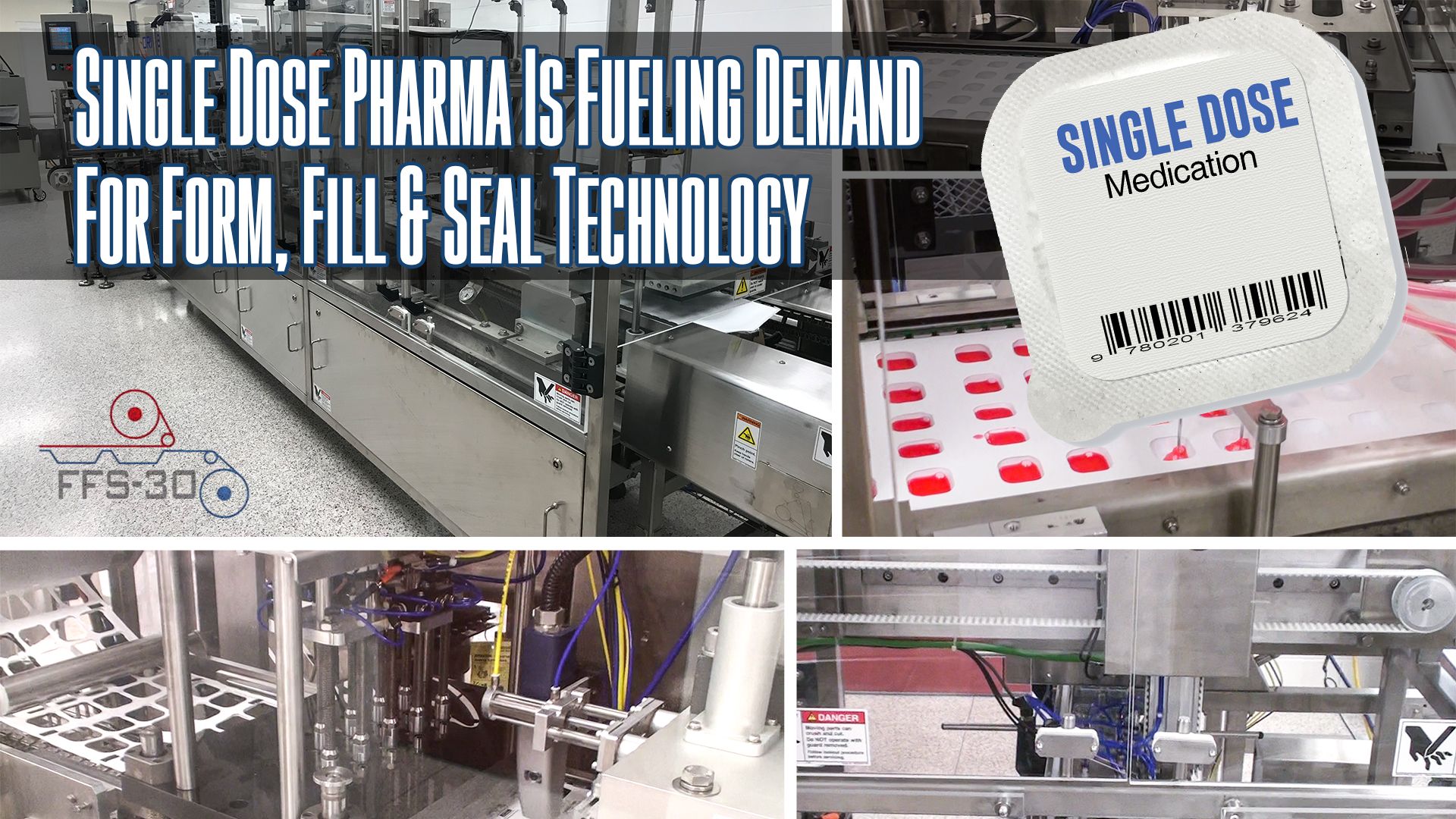Single Dose Pharma Is Fueling Demand For Form, Fill & Seal Technology
Pharmaceutical Manufacturers Turn To Form, Fill & Seal Technology For Single Dose Medication Packaging.
Growing demand for single dose pharmaceutical packaging, particularly for aseptically filled liquid medications, is creating an opportunity for form-fill-seal (FFS) technology suppliers like ORICS Industries.
Used for the aseptic packaging of ophthalmic products, respiratory (inhaled) medications, biologics and vaccines and other injectable drugs, FFS technology enables continuous, automated forming, filling and sealing of unit-dose liquid packs.
Package formats include ampoules, vials and bottles, and product sterility can be assured throughout the process. Benefits of FFS, versus glass packaging, include reduced waste and breakage and the elimination of product preservatives, which patients may be allergic to.
The FFS-30 is an inline, intermittent motion sealing system that forms real steroids trays, cups and pouches in real time from roll stock film.
By forming trays online, this system has the ability to save the user tens of thousands of dollars by eliminating the costs associated with purchasing and shipping pre-formed trays.
What’s more, with a simple tooling change, this flexible system is capable of creating multiple tray/pouch sizes and configurations.

Film may be flexible, semi-rigid, or rigid.
Final package may be ambient, vacuumed, gas flushed to create a gas/air filled package or vacuum gas flushed to create a true Modified Atmosphere (M.A.P.) package.
FS offers cost savings over conventional aseptic processing in glass. Traditional filling and packaging requires many steps and individual machines for filling, stoppering and capping. In contrast, FFS requires one piece of automated machinery, and takes place in six seconds or less.
When used to manufacture products intended for subsequent sterilization, these machines may be installed within an environment that would normally be considered appropriate for the manufacture and filling of terminally sterilized products. If the machines are to be used for the aseptic filling of sterile products they are usually provided with a localized environment at the point of fill with Grade A air.




